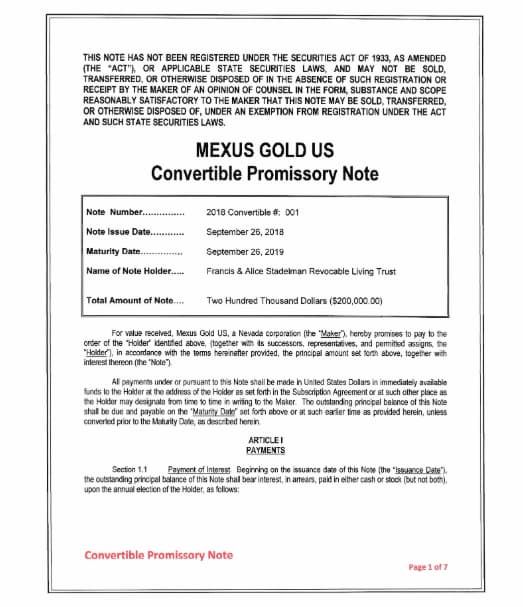Convertible Debt
What Is Convertible Debt? Terms, Traps, and When It Makes Sense

What is convertible debt? It’s the kind of thing that sounds complicated until you realize it’s just a clever way to raise money before you’re ready to put a number on your business. If you’ve ever tried to fund your next move without giving up too much too soon, this might already be on your radar. Here’s what you need to know and what to watch out for.
What is Convertible Debt
Need cash but don’t want to set a valuation yet? That’s precisely where convertible debt comes in.
It’s a loan that turns into equity later, usually when you raise your next funding round.
But how does convertible debt work? Here’s how:
- You borrow money now
- You don’t pay it back in cash
- Instead, the investor gets shares down the road, often at a discount
That’s the convertible debt meaning: part loan, part equity,
If you’ve ever said, “I just need to buy time,” you already get the heart of what is convertible debt.
How Convertible Debt Works: From Note to Equity
Based on the convertible debt definition, it starts as a loan but converts into shares when your business hits a milestone, such as bringing in new investors or growing large enough to set a company valuation.
No monthly payments. No early valuation stress. Just room to grow.
Here’s a quick convertible debt example:
An investor gives your business $100,000 to help you build. You agree that instead of paying that money back, they’ll eventually get a chunk of ownership in your company that's often at a better price than others once your business is ready to take on more investment.
This shows how does convertible debt works: cash now, equity later, without the early pressure.
Built for founders, accountants, and finance teams
Check out howWho Benefits from Convertible Debt?
Convertible debt is built for that in-between stage: when things are working, but it’s too early to pin down what your company’s really worth.
Here’s who it really helps:
- Founders in early stages: You’re growing, not fundraising full-time. It keeps things simple and moving.
- Investors who like to get in early: They take more risk, and in return, get better terms later.
- Teams between raises: This helps bridge the gap without a full equity round.
- Founders who want less legal, more building: The convertible debt meaning? Fast money. Fewer legal headaches.
If you’re building and just need breathing room, convertible debt might be the thing that keeps you going.
Pros and Cons of Convertible Debt
Convertible debt is fast and flexible, but it comes with tradeoffs. Here’s how it really plays out:
| Pros | Cons |
|---|---|
| Quick cash – No need to set a valuation upfront. | Cap table clutter – Multiple notes = messy later. |
| Less legal hassle – Smoother than equity rounds. | It’s still debt – Interest adds up. It might not convert. |
| Investor perks – Early bets get sweet deals. | Surprise dilution – You won’t know how much equity you gave up until it happens. |
| Stays out of your way – Focus on building, not pitching. | Terms vary – Some notes tilt heavily toward investors. |
Convertible debt helps you move fast, just make sure you know what you’re giving up later.
Want to see how convertible debt affects your numbers? Sign up to Cash Flow Frog today and find out.
Sign up todayWhat Is the Difference Between Convertible and Non-Convertible Debt?
Some debt turns into equity. Some just want their money back. Here’s how they compare:
| Convertible Debt | Non-Convertible Debt |
|---|---|
| Starts as a loan | Starts as a loan |
| Later turns into equity. Your investor becomes a part-owner | Stays a loan. You pay it back with interest, no ownership involved |
| Paid back in shares, not cash | Paid back in cash, on a schedule |
| Flexible and founder-friendly | More traditional, less wiggle room |
| No need to set a valuation right away | Usually requires clear terms and financials upfront |
| Perfect for early-stage funding. It’s the go-to convertible debt for startups | More common in venture debt or bank loans |
In short, based on the convertible debt definition, it can become part of your cap table. Non-convertible debt stays strictly financial.
Key Terms in a Convertible Note

Image: A Convertible Debt Promissory Note Example | SEC
Using convertible debt? These are the terms you’ll hear that can affect conversion price and what they mean:
Interest Rate & Accrued Interest
When you raise money through convertible debt, your investor isn’t just waiting around. Their money’s earning while it’s with you.
- Interest rate: The “thank you” for using their money (usually 5–8% a year).
- Accrued interest: That interest quietly builds over time, even if no cash changes hands.
- No cash payback: When the note converts, the interest usually turns into a few extra shares for the investor.
It might not sound like much, but over time, those extra shares can add up, especially if your company grows fast.
Valuation Cap & Discount
Early investors take a risk, and convertible debt rewards them for it.
- Valuation Cap: Sets the highest price their shares will convert at, even if your startup takes off. It’s like locking in a deal before the price goes up.
- Discount: A % off the future share price. Basically, an early-backer bonus.
Cap, discount, or both, it’s how investors get more for betting on you early. And it’s how your future dilution scenarios start taking shape.
MFN, Pro-Rata Rights, Information Rights
These are common extras in convertible debt deals, small terms, big meaning:
- MFN (Most Favored Nation): If someone else gets better terms later, early investors can match them. Fair’s fair.
- Pro-rata rights: Let investors buy more later so their slice doesn’t shrink in the next round.
- Information rights: They receive updates on financials, key metrics, and major changes. Not control, just visibility.
You’ll see these a lot in convertible debt for startups. They’re not scary, but they matter.
Conversion Triggers
Convertible debt doesn’t stay debt forever. It kicks into equity when certain things happen.
Here’s what causes it:
- Qualified financing: You raise a solid funding round. The note converts automatically.
- Maturity date: The loan hits its deadline. If no round is raised, the investor can convert or ask for cash back.
- Change of control: You sell the company. The note either converts or pays out.
These triggers shape your conversion ratio and ownership down the line, so it pays to know what’s coming.
Wondering how convertible debt changes your business finances?
Try Cash FlowSAFE vs. Convertible Debt
Both help you raise money now and turn it into equity later. But they play by different rules.
| SAFE | Convertible Debt |
|---|---|
| Not a loan – no interest, no deadline | A loan comes with interest and a maturity date |
| Fewer terms, faster to close | More structure and legal detail |
| Converts when you raise funding | Converts at a trigger (like funding or maturity) |
| Simple and founder-friendly | More investor protection (caps, discounts, rights) |
| Can get messy in dilution scenarios | Easier to model with cash flow forecasting |
In the SAFE vs convertible note debate, SAFEs are fast. Convertible debt gives more structure and is helpful when things start to get serious.
Want to see how either one impacts your cap table or runway?
Try scenario planningCap Table Impact and Dilution
Convertible debt might not show up on your cap table right away, but it definitely shows up later.
- Out of sight, not out of impact: Notes convert into equity, and that can shrink your slice fast.
- Dilution adds up: Multiple notes with caps and discounts? That math can get ugly.
- Plan ahead: Use cash flow forecasting or scenario planning to see how different dilution scenarios play out.
It's easy to raise but harder to unwind. Know what you’re giving up before conversion day hits.
Investor Protections You’ll See

Image: Entrepreneur and Investor discussing loan terms | Freepik
When investors fund you through convertible debt, they’ll want a few safety checks, such as:
- Valuation cap & discount: Ensures they get better equity terms later.
- Conversion triggers: Lay out when the debt turns into shares (like after a raise or sale).
- Pro-rata rights: Let them buy more in future rounds to keep their share steady.
- Information rights: Gives them key updates for visibility.
- Liquidation preference: If things go south, they may get paid back before others.
These terms are common in convertible debt for startups and they show up later in your dilution scenarios, so it’s smart to get clear on them early.
Use Cases: When Convertible Debt Makes Sense
Convertible debt works best when you need money now and want flexibility later.
Here’s when it really fits:
- Too early to set a valuation: Ideal for pre-seed or early-stage startups still figuring things out.
- You’re between raises: Just need to extend your runway without launching a full round.
- In an accelerator or moving fast: Clean, quick, and no heavy legal lift.
- You’re close to a milestone: Need cash to hit a KPI or ship something important.
You can also use cash flow software and KPI dashboards to map out what you need and how the note's conversion might affect ownership.
Red Flags and Common Mistakes
Convertible debt is easy to start and easy to mess up. Here’s what to watch for:
- Surprise dilution: Stack a few notes, and your ownership might shrink more than you expected. Always model your dilution scenarios.
- No clear conversion plan: Hoping it all works out later? Risky move. Set terms early.
- Too-low valuation caps: Great for fundraising now, painful later when you raise big.
- Ignoring interest: Even a small rate can mean more shares handed over. Know what the convertible debt meaning actually includes.
- Burning too fast: A high burn multiple can kill momentum before the next round.
Stay ahead with solid terms, smart planning, and good cash flow software. It’ll save you stress and equity.
Alternatives to Convertible Debt

Image: Money used for business financing | Unsplash
Convertible debt is handy, but it’s not your only move. Here are a few other ways to raise without overcomplicating things:
- SAFEs: Even lighter than convertible debt. No interest, no deadline. Perfect for fast, early-stage rounds.
- Priced equity: You set a valuation, raise on it, and skip surprises later. Takes more time, but it’s clean.
- Revenue-based financing: Pay investors back as you earn. No equity, but it works best if your cash flow is steady.
- Grants: Free money. Slower to get, but no ownership lost.
- Venture debt: Raise more without more dilution, just make sure you can repay it.
Whatever you choose, smart cash flow forecasting helps you see how it plays out before you commit.
Weighing up which funding ways to use?
See how it worksIs Convertible Debt Right for Your Business?
Convertible debt makes sense if you’re raising early, moving fast, and not ready to set a valuation. It’s quick, flexible, and keeps things simple while you focus on building.
Just make sure you’ve mapped out the impact. Tools like Cash Flow Frog help you see how it affects your runway, ownership, and dilution, so you don’t give away more than you meant to.
FAQ
Looking for more help?
Visit our help center to find answers to your questions about CashFlowFrog.
Trusted by thousands of business owners
Start Free Trial Now